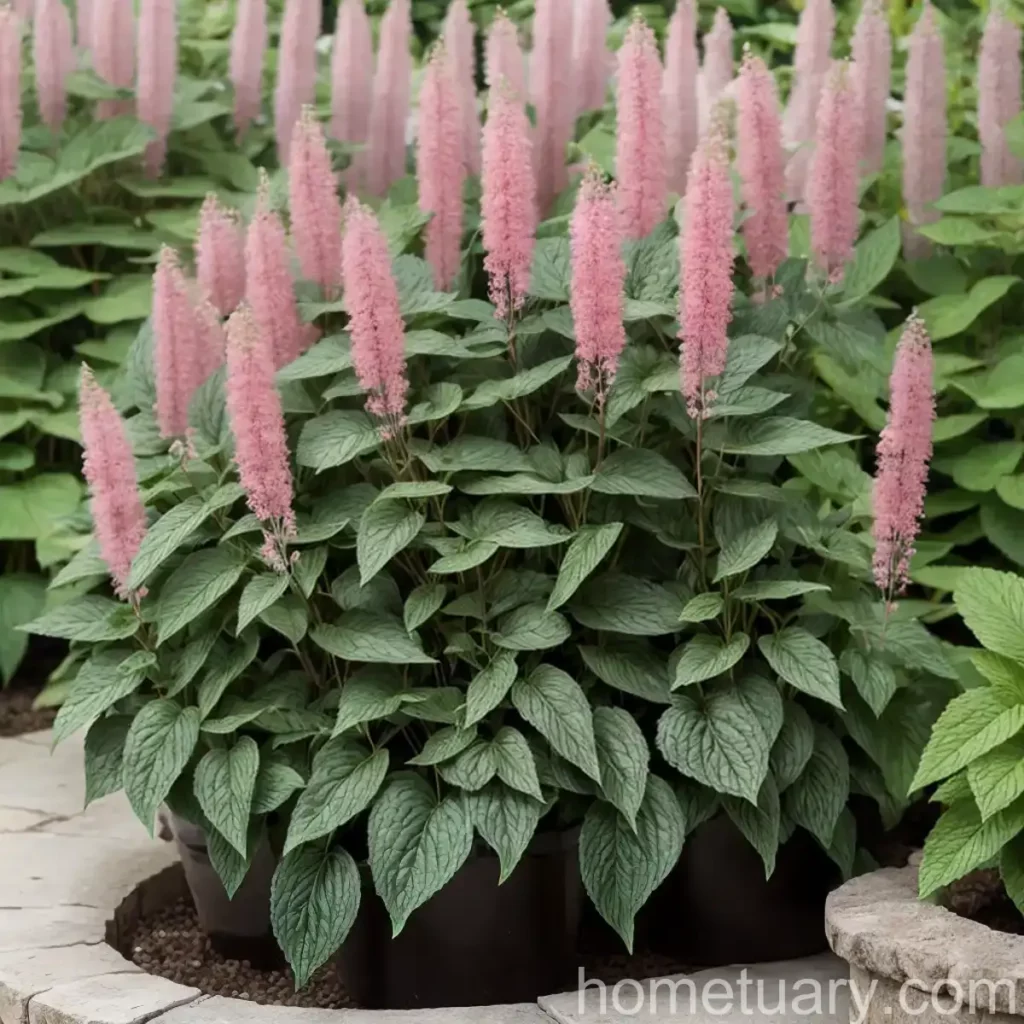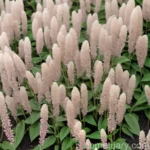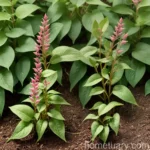The Amazing Asian Mint (Persicaria odorata)
Introduction to the Asian Mint
The Asian mint, scientifically known as Persicaria odorata, is a unique and versatile herb that holds immense culinary, medicinal, and aromatic value. This herb, native to Southeast Asia, has gained popularity not only for its refreshing and aromatic flavor but also for its various health benefits. In this comprehensive guide, we’ll delve deep into the world of Asian mint, exploring its cultural significance, culinary uses, growth requirements, and much more.
Key Takeaways – Asian Mint (Persicaria odorata)
Before we embark on our journey to understand the features and requirements of the Asian mint, let’s take a sneak peek at some key takeaways.
- Culinary Delight: Known for its use in Asian cuisine, particularly Vietnamese and Thai dishes, the Asian mint adds a refreshing and flavorful touch to various culinary creations.
- Medicinal Properties: Apart from its culinary uses, this aromatic herb holds significant medicinal properties and has been used traditionally for various health remedies.
- Easy to Grow: With the right conditions and care, the Asian mint can thrive both indoors and outdoors, making it an accessible and versatile plant for enthusiasts.
- Aromatic Foliage: Its fragrant leaves make it a prized addition to herb gardens and are valued for its essential oils and fragrance.
- Popularity in Container Gardening: Due to its adaptability to containers, the Asian mint has gained popularity among urban gardeners and those with limited outdoor spaces.
Now, let’s dive into the specifics of the Asian mint, understanding its cultural significance, growth requirements, medicinal uses, and more.
What is the Asian Mint (Persicaria odorata)?
The Asian mint, also known as Vietnamese coriander, laksa leaf, or rau răm, is a herbaceous plant belonging to the Polygonaceae family. With its scientific name Persicaria odorata, it is essential to note that despite its common names, the Asian mint is not botanically related to the mints from the Lamiaceae family. This distinction showcases its unique characteristics and sets it apart from other mint varieties.
Species Overview
- Scientific Name: Persicaria odorata
- Common Names: Asian mint, Vietnamese coriander, laksa leaf, rau răm
- Family: Polygonaceae
- Native Habitat: Southeast Asia, including countries like Vietnam, Malaysia, and Thailand
- Cultural Significance: Integral part of Southeast Asian cuisine and traditional medicine
Physical Characteristics
The Asian mint exhibits several distinct physical attributes that contribute to its culinary and medicinal value.
- Leaves: The leaves are long, narrow, and lance-shaped with prominent dark green coloration and deep red or maroon markings.
- Aroma: The leaves emit a strong, fresh, and peppery fragrance with hints of citrus, contributing to its signature aroma.
- Flowers: While the focus is primarily on its aromatic leaves, the Asian mint also produces small pink to pale purple flowers in certain conditions.
Key Attributes
To truly understand the versatility of this plant, it’s essential to delve into its key attributes and the roles they play in different aspects of its usage.
- Flavor Profile: The Asian mint offers a combination of flavors, including citrusy, peppery, and slightly bitter notes, making it a distinctive ingredient in various dishes and beverages.
- Aromatic Properties: Apart from its flavor, the aromatic properties of the Asian mint make it a valuable addition to aromatherapy and fragrance production.
- Health Benefits: The plant is not only prized for its flavor and aroma but also holds various health benefits that have been utilized for generations.
Culture of the Asian Mint
Understanding the cultural significance of the Asian mint provides valuable insights into its uses, perceptions, and historical importance within various societies. Let’s explore the cultural aspects of this versatile herb.
Culinary Significance
In the culinary realm, the Asian mint plays a significant role in enriching the flavors of traditional Southeast Asian cuisine.
- Vietnamese Cuisine: The Asian mint, known as rau răm in Vietnamese, is a staple herb in dishes like pho, spring rolls, and various salads, contributing its distinctive flavor and aroma.
- Thai Cuisine: In Thai cuisine, this herb, referred to as phak phai, is used in dishes such as soups, curries, and salads, adding a refreshing and peppery touch to the culinary creations.
- Malaysian and Cambodian Cuisine: The herb also holds importance in Malaysian and Cambodian cuisine, where it is integrated into local specialties, further illustrating its regional significance.
Traditional Medicine
Beyond its role in cuisine, the Asian mint has a well-established place in traditional medicine practices across Southeast Asia.
- Health Remedies: In traditional medicine, the herb has been employed for its diuretic, anti-inflammatory, and antipyretic properties, offering relief from various health ailments.
- Aromatherapy: The aromatic leaves are often used in aromatherapy and herbal remedies, owing to their refreshing fragrance and potential therapeutic benefits.
Symbolism and Significance
The Asian mint holds cultural significance, representing more than just a culinary or medicinal herb. Its presence in various cultural practices and traditional rituals reflects its broader importance within these societies.
- Cultural Symbol: In some regions, the Asian mint is revered for its symbolism, signifying freshness, vitality, and purity, and is often used in ceremonial offerings and decorations.
- Aromatic Significance: Its fragrant leaves and essential oils have been traditionally valued for their role in enhancing ambiance and promoting well-being, demonstrating its influence beyond just its taste.
Overall, the cultural significance of the Asian mint amplifies its value and showcases its deep-rooted connection with the people and traditions of Southeast Asia.
Uses of the Asian Mint
Culinary Uses
The Asian mint stands out for its versatile applications in the culinary world, where it adds distinct flavors and aromas to a wide range of dishes.
- Fresh Herb: The leaves of the Asian mint are used as a fresh herb, imparting their signature citrusy, peppery, and slightly bitter flavors to dishes.
- Salads: It is a common ingredient in Southeast Asian salads, providing a refreshing and aromatic element to the overall taste profile.
- Soups and Broths: The herb plays a vital role in enhancing the flavor and aroma of traditional Southeast Asian soups and broths, contributing to their depth and complexity.
- Curries and Stir-fries: Its fresh leaves are added to curries and stir-fries as a finishing touch, infusing the dishes with its unique fragrance and taste.
- Noodle Dishes: In dishes like Vietnamese pho and Thai noodle soups, the Asian mint is used as a garnish, elevating the overall dining experience.
Medicinal Uses
Beyond its culinary applications, the Asian mint also holds various medicinal uses, deeply ingrained in traditional practices.
- Anti-Inflammatory Properties: The herb’s leaves are believed to possess anti-inflammatory properties, making them valuable for easing discomfort and promoting healing.
- Diuretic Benefits: It is known for its diuretic effects, aiding in promoting healthy urinary function and reducing water retention.
- Antipyretic Actions: In certain traditional remedies, the Asian mint is utilized for its potential antipyretic effects, helping to alleviate fevers.
Aromatherapy and Fragrance
The aromatic leaves of the Asian mint are utilized beyond the kitchen, contributing to other sensory experiences.
- Aromatherapy: The fresh, citrusy aroma of the leaves makes them ideal for aromatherapy, promoting relaxation and rejuvenation.
- Fragrance Production: The essential oils derived from the leaves are used in the production of perfumes, scented candles, and other fragrant products.
Overall, the uses of the Asian mint extend far beyond just its flavor, encompassing its role in enhancing health, well-being, and sensory experiences.
Growing Asian Mint: A Guide to Thriving Plants
To successfully cultivate the Asian mint, it’s essential to understand its growth requirements and the factors that contribute to its well-being. Let’s explore the crucial elements of growing and caring for this versatile herb.
Water
Proper watering is fundamental to the health and vitality of the Asian mint, ensuring that it thrives in its growing environment.
- Moist Soil: The herb prefers consistently moist soil to support healthy growth and leaf production. Ensure that the soil does not dry out completely between watering sessions.
- Drainage: Good drainage is essential to prevent waterlogging, as excessive moisture can lead to root rot and other issues. Use well-draining soil and containers that facilitate proper drainage.
Sunlight
The Asian mint has specific requirements when it comes to sunlight exposure, influencing its growth and overall vigor.
- Partial Shade: While the plant appreciates some direct sunlight, it generally thrives in partial shade or filtered light, especially during the hottest parts of the day.
- Indoor Cultivation: When grown indoors, provide the herb with bright, indirect light near a window or under suitable indoor lighting for optimal growth.
Fertilizer
Appropriate feeding can enhance the growth and vigor of the Asian mint, ensuring that it receives the necessary nutrients for healthy development.
- Balanced Fertilizer: Use a balanced, water-soluble fertilizer with an equal ratio of nitrogen, phosphorus, and potassium to support overall plant health and foliage production.
- Frequency: Apply fertilizer every 4-6 weeks during the growing season, tapering off during the plant’s dormant period.
Soil
The composition and quality of the soil play a crucial role in the Asian mint’s growth and performance.
- Rich, Well-Draining Soil: The herb thrives in nutrient-rich, well-draining soil that provides a stable foundation for root development and effective moisture management.
- pH Level: Aim for a slightly acidic to neutral pH range (6.0-7.0) to create an optimal growing environment for the Asian mint.
Pruning
Pruning is an essential aspect of maintaining the health, shape, and productivity of the Asian mint plants.
- Regular Trimming: Encourage bushy growth and prevent legginess by regularly trimming the plant, especially after flowering or seed production.
- Harvesting Leaves: Regularly harvest the leaves for culinary use, which not only aids in pruning but also promotes continuous leaf production.
Propagation
The ability to propagate the Asian mint allows for the expansion of its cultivation and the establishment of new plants.
- From Cuttings: Propagate the herb from stem cuttings, placing them in water to encourage root development before transplanting into the soil.
- Division: Divide mature plants to create new starts, ensuring that each division has sufficient roots and foliage to support its growth.
Container Popularity
The Asian mint’s adaptability to container gardening has contributed to its popularity among home gardeners and herb enthusiasts.
- Container Size: Choose a sufficiently large container that allows for ample root growth and soil volume, promoting the development of a healthy plant.
- Indoor Cultivation: Containers facilitate the herb’s growth indoors, making it accessible to individuals without outdoor garden space.
Common Diseases
Understanding the potential diseases and issues that can affect the Asian mint plants is crucial to maintaining their health and vitality.
- Powdery Mildew: Keep an eye out for powdery mildew, a common fungal disease that can affect the foliage, leading to white, powdery patches on the leaves.
- Root Rot: Overly wet conditions can contribute to root rot, causing the plant’s roots to decay and impacting its overall health.
Disease Diagnosis
Early detection and diagnosis of diseases are essential in implementing effective treatment and management strategies.
- Visual Symptoms: Look out for signs such as white powdery coatings on the leaves, yellowing or wilting foliage, and evidence of rot or decay in the roots.
- Prompt Action: Upon detecting any signs of disease, take prompt action to prevent its spread and address the underlying issues, such as adjusting watering practices or applying suitable treatments.
Common Pests
Various pests can pose a threat to the Asian mint, requiring preventive measures and management strategies to protect the plants.
- Aphids: These small, soft-bodied insects can cluster on the foliage, feeding on plant sap and potentially spreading diseases.
- Spider Mites: Spider mites are known to infest the leaves, causing stippling and webbing as they feed on the plant’s juices.
Botanist’s Tips
Here are some tips from botanists and experienced gardeners to ensure the successful growth and care of Asian mint plants.
- Regular Maintenance: Engage in regular maintenance tasks, including watering, fertilizing, and pruning, to promote the plant’s health and longevity.
- Observation: Monitor the plants closely for any signs of disease or pest infestations, taking proactive measures to address issues as soon as they arise.
Fun Facts about Asian Mint
No exploration of the Asian mint would be complete without delving into some intriguing and delightful fun facts about the herb.
- Culinary Fusion: The Asian mint is a prime example of how a single herb can seamlessly integrate into a wide range of culinary traditions, bridging diverse flavors and cultures.
- Historical Significance: With its roots in traditional medicine and historical culinary practices, the Asian mint offers a glimpse into the rich tapestry of Southeast Asian heritage.
- Prolific Grower: The Asian mint’s resilience and adaptability make it a prolific grower, capable of flourishing in various conditions with the right care.
- Aromatic Allure: Its refreshing aroma and essential oils have captured the attention of fragrance enthusiasts and aromatherapy practitioners, adding a new dimension to its appeal.
- Cultural Emblem: Beyond its practical uses, the Asian mint serves as an emblem of tradition and heritage, linking generations through its culinary and medicinal significance.
Now that we’ve explored the various facets of the Asian mint, let’s take a closer look at some fascinating insights from the world of botany and horticulture.
Links to External Resources
For further in-depth information on the Asian mint, its uses, cultivation, and more, explore the following external resources:
- Persicaria Odorata: Scientific Documentation
- Asian Mint | Missouri Botanical Garden
- Growing Asian Mint Indoors | University of Maryland Extension
- Culinary and Medicinal Uses of Persicaria Odorata
- Asian Mint: A Complete Guide | Gardening Know How
These resources offer valuable insights and detailed information to supplement your understanding of the Asian mint and its diverse applications.
Conclusion
The Asian mint, with its scientific elegance as Persicaria odorata and its cultural significance as a culinary and medicinal herb, stands out as a multifaceted plant with a rich heritage. As we’ve journeyed through its usage, growth requirements, cultural significance, and unique attributes, we’ve gained a deeper appreciation for the versatility and value of this aromatic herb. Whether it’s adding a refreshing touch to a traditional dish, contributing to holistic wellness practices, or infusing a space with its invigorating fragrance, the Asian mint continues to captivate and enchant enthusiasts and practitioners alike.
Through understanding its cultural roots, embracing its culinary and medicinal uses, and mastering its growth requirements, we open the door to a world of sensory delights and practical applications, celebrating the enduring allure of the Asian mint.
We hope this comprehensive guide has sparked your curiosity and inspired a newfound appreciation for the Asian mint, encouraging you to explore its diverse possibilities and cultivate its presence in your own culinary, wellness, or horticultural pursuits.















